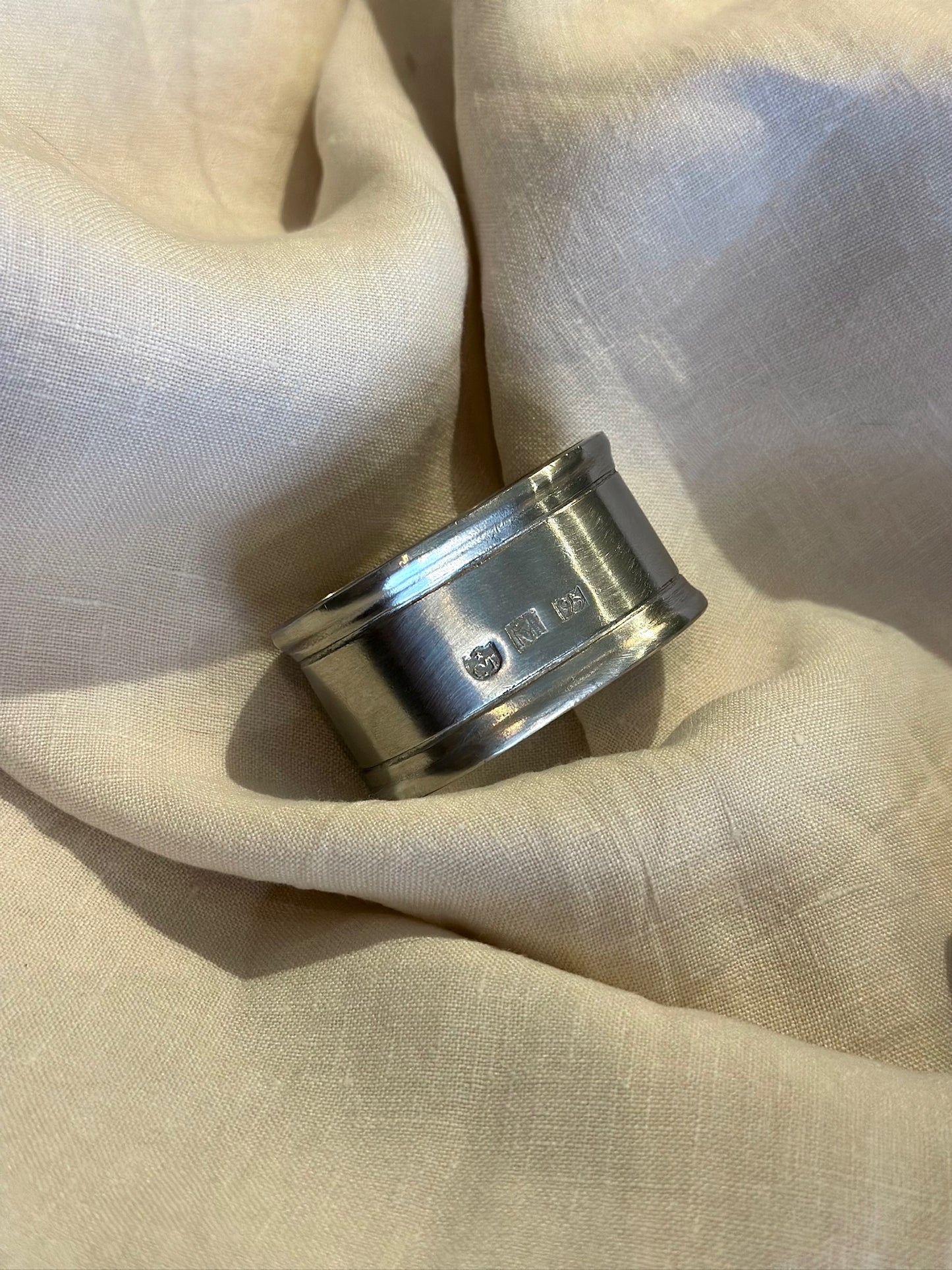V.VM Collections
'Lombardia' Oval Napkin Rings by Cosi Tabellini
'Lombardia' Oval Napkin Rings by Cosi Tabellini
Couldn't load pickup availability
This solid pewter oval napkin ring has the elegance needed for even the most formal of tables, while still being simple enough to be used on a daily basis.
Napkin rings are a bourgeois European invention that first appeared in France in the 19th century and quickly spread throughout the West. Originally engraved with the owner's name on the side, they were a popular gift for birthdays, weddings, and Christmas.
Using a napkin ring elevates a meal into something special, and Cosi Tabellini napkin rings add charm to a table without making it pompous.
ABOUT COSI TABELLINI PEWTER
Cosi Tabellini offers a world-renowned range of hand-crafted pewter and ceramics that has gravitas and simple beauty that assures quality, longevity and good taste. Influenced by Cosi Tabellini's Italian roots, the range combines historic craftsmanship and integrity in a contemporary form, complementing the most traditional as well as the most modern of homes.
All Cosi Tabellini pewter is reassuringly lead-free, food-safe and approved by both the EU and US FDA, and hand-crafted by artisans in Lombardy, Northern Italy.
Pewter, less expensive than silver, but just as striking and beautiful, is thought to have been first made in the Bronze Age, with bronze and pewter being related alloys. Pewter is mostly made up of tin, with a small amount of copper (and antimony), while bronze is mostly made of copper, with a small amount of tin. Metallurgists have speculated that pewter could have been invented when the quantities of metal in the alloy were reversed, either by accident or design.
Tin is the fourth most precious metal today after platinum, gold and silver, and pewter has long been prized as an alternative to silver.
The 16th & 17th Centuries were the Golden Age of pewter, with pewter being the chief component of tableware and liturgical objects universally used across Europe, such as plates and candlesticks. The art of casting had become so sophisticated that truly beautiful pieces could be achieved, especially hollowware (tableware such as creamers, tea pots and tureens) coinciding with the craze, at that time, for new-fangled beverages, such as coffee & tea, as well as carafes and tankards, alongside the age-old staples of wine and ale. Pewterware became prized not just for its utilitarian purposes, but for its decorative beauty and as works of art.
Free of traces of lead, by law, since the 1970s, many pewter workshops have kept the forms of traditional styles that go back generations, since the moulds where the alloys were fused were costly to replace and therefore handed down from generation-to-generation by the craftsman. However, as a fantastically versatile material, pewter workshops, depending upon the skills of the pewterers within, are able to produce innovative and elegant designs, marrying the heritage of pewter, using the traditional value of craftsmanship, with a freshness of 21st Century design, which allows the ancient material of pewter to hold its own in contemporary times.
Share










